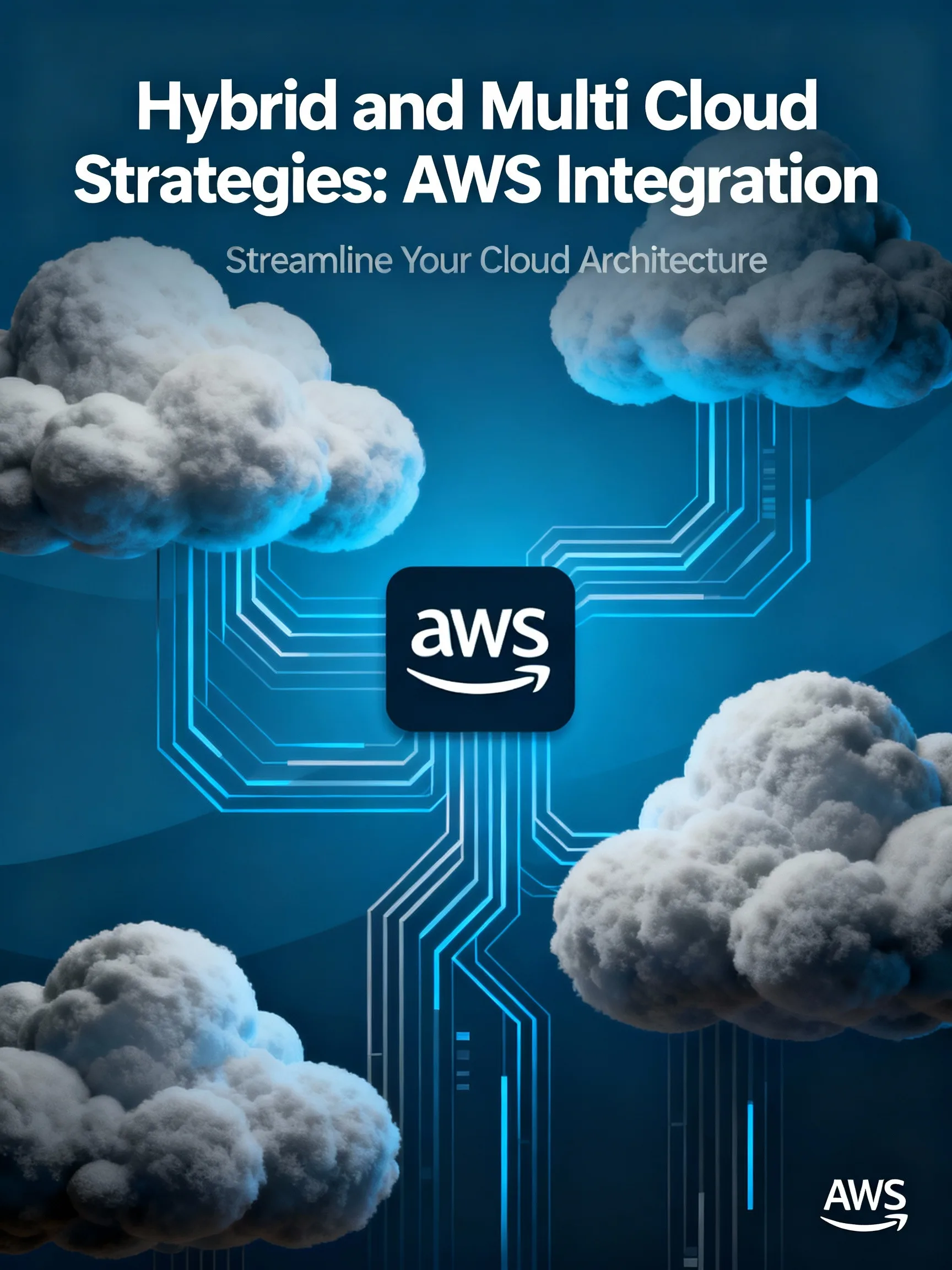
Hybrid and multi-cloud strategies are now core to modern IT, giving organizations flexibility, resilience, and cost control. To unlock this value, you must design how AWS integrates with other clouds and on-premises environments with intention. This guide explains practical AWS integration best practices for building secure, scalable, and manageable hybrid and multi-cloud architectures.
Understanding Hybrid and Multi-Cloud with AWS
Hybrid cloud combines on-premises infrastructure with one or more public clouds, while multi-cloud uses services from multiple cloud providers simultaneously. In practice, most enterprises run a blend of both. Gartner estimates that over 75 percent of mid-size and large organizations will adopt a multi-cloud or hybrid strategy, driven by regulatory needs, latency requirements, and vendor risk management.
In this landscape, AWS often serves as a primary cloud platform, while workloads span data centers, Microsoft Azure, Google Cloud, SaaS platforms, and edge locations. Effective hybrid and multi-cloud strategies AWS integration hinges on standardized networking, identity, security, and operations across all environments. The goal is to make workloads portable and data accessible while keeping complexity and risk under control.
Designing Network and Connectivity Foundations
Network architecture is the backbone of any hybrid and multi-cloud design. Without stable, performant connectivity, every higher-level integration pattern becomes fragile. Start by standardizing the way networks are segmented and connected across environments.
- Use private connectivity where possible. For production workloads, favor AWS Direct Connect or VPN over the public internet. Direct Connect can provide more consistent latency and throughput, which is essential for data-intensive workloads or synchronous integrations with on-premises systems.
- Create a hub-and-spoke network model. Rather than building ad-hoc links between every environment, implement a central hub. In AWS, this might be a core networking account with a transit gateway, peering to other AWS accounts and connecting via VPN or Direct Connect to data centers and other clouds.
- Align IP addressing and routing early. Overlapping IP ranges and inconsistent CIDR planning are common sources of pain. Define a global IP strategy that avoids overlap between VPCs, on-prem networks, and other cloud providers, and document routing rules clearly.
- Standardize traffic controls. Use security groups and network ACLs in AWS consistently, and mirror similar patterns with network security groups or firewalls in other clouds. This makes it easier to audit and reason about east-west traffic and reduces misconfigurations.
By treating network design as a cross-cloud platform concern rather than an AWS-only problem, you set the stage for predictable, secure connectivity across all environments.
Unifying Identity, Access, and Security Controls
Security is often the biggest concern in hybrid and multi-cloud strategies. AWS integration best practices focus on creating unified identity and security controls that extend beyond any single provider.
- Centralize identity and single sign-on. Integrate AWS IAM Identity Center (or SAML-based federation) with a central identity provider such as Azure AD, Okta, or an on-prem directory. This gives users one identity across AWS, other clouds, and on-premises systems, simplifying lifecycle management and compliance.
- Adopt least privilege policies consistently. Design roles, groups, and policies in AWS that mirror access patterns in other clouds. For example, use role-based permissions for developers, operators, and auditors, and keep naming standards uniform across providers.
- Encrypt data in transit and at rest everywhere. Use TLS for traffic between AWS, on-prem, and other clouds. Standardize on KMS in AWS and equivalent key management services elsewhere, and define clear policies for key rotation, access, and logging.
- Implement shared security baselines. Create reusable baselines for network controls, logging, patching, and vulnerability management that apply to all environments. For AWS, you might use AWS Config, Security Hub, and Organizations service control policies as part of this baseline.
When teams share a common view of identity, access, and security controls across platforms, hybrid and multi-cloud strategies become significantly easier to operate and audit.
Data, Application Integration, and Portability
Once connectivity and security are in place, the focus shifts to how applications and data interact across environments. Robust hybrid and multi-cloud strategies AWS integration depends on clear patterns for data movement and application communication.
- Minimize cross-cloud chatty traffic. Latency and egress costs can quickly erode the benefits of multi-cloud. Avoid architectures where services in different clouds call each other synchronously on every request. Instead, colocate tightly coupled components or use asynchronous messaging.
- Use APIs and event-driven patterns. Integrate systems via well-defined APIs and event streams. For example, an on-prem ERP system might publish events to Amazon SNS or EventBridge, which then fan out to services in AWS and other clouds. This decouples systems and improves resilience.
- Standardize data formats and governance. Use common schemas, data catalogs, and governance rules across platforms. For analytics, data might be landed into Amazon S3 and also replicated to another cloud’s storage for regional or regulatory reasons, but governed under one set of data quality and access policies.
- Design for workload portability where it matters. Not every application needs to be portable. For those that do, containerization and Kubernetes can help. Running EKS on AWS and Kubernetes clusters in other clouds provides a consistent deployment model, although you still need to account for cloud-specific services and networking.
By focusing on standard interfaces and clear data contracts, you can move workloads or share data between AWS and other platforms without extensive rewrites each time.
Operational Excellence and Cost Governance Across Clouds
Operational complexity can quickly spiral in hybrid and multi-cloud environments. Mature hybrid and multi-cloud strategies AWS integration include observability, automation, and cost controls that span providers.
- Implement unified observability. Collect logs, metrics, and traces from AWS, other clouds, and on-prem into a central monitoring platform. For AWS, use CloudWatch, CloudTrail, and X-Ray as sources, then aggregate into tools like OpenSearch, Prometheus, or commercial observability platforms. Cross-cloud dashboards help teams troubleshoot issues without guessing where a problem lives.
- Automate infrastructure with code. Use infrastructure-as-code tools, such as Terraform, AWS CloudFormation, or Pulumi, to manage resources in a consistent way. A single repository with modular definitions for AWS, Azure, and on-prem can enforce standards and reduce drift.
- Define shared SLOs and incident processes. Service-level objectives should reflect end-to-end performance, not just AWS-specific metrics. Align incident management and runbooks across teams so that a failure in one cloud is handled consistently with failures elsewhere.
- Establish cost visibility and guardrails. Multi-cloud promises cost optimization but can also increase spend if unmanaged. Use AWS Cost Explorer, AWS Budgets, and equivalent tools in other clouds, then roll up data into a central cost management platform. Define tagging standards, budget alerts, and regular cost reviews that cover the entire hybrid environment.
With strong operations and governance, hybrid and multi-cloud strategies become sustainable rather than a source of constant firefighting.
Putting It All Together
Hybrid and multi-cloud strategies offer powerful benefits when AWS integration is designed deliberately. By investing early in network foundations, unified identity and security, robust data and application integration, and cross-cloud operations and cost governance, organizations can reduce risk while increasing flexibility. The most successful teams treat AWS as a core component of a broader platform strategy, not as an isolated environment, and continuously refine their architecture as business needs evolve.






Leave a Reply